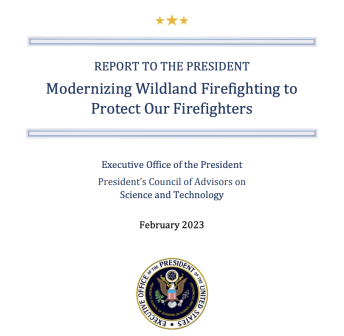Wildfires are a growing threat in the United States, with over 1.5 billion acres of fire-prone land in need of protection. Wildland firefighters put their lives on the line every day to combat these fires, but they are often stuck using outdated tools and technologies. To address this issue, the President's Council of Advisors on Science and Technology (PCAST) has released a report on modernizing wildland firefighting.
The report contains several recommendations for improving wildland firefighting, including:
- Assess, adapt, and field currently available technologies to improve communications, connectivity, and technology interoperability for wildland firefighters. The USDA and DOI should develop a program to train all federal wildland firefighters on the use of new technologies.
- Establish a joint-agency executive office to accelerate the development and deployment of new technologies that enhance situational awareness and initial attack capabilities. This office would coordinate efforts across federal agencies and have the mandate and budget to develop and execute a unified technology roadmap.
- Strengthen the full operational sequence of wildland firefighting, from detection to suppression, by assessing existing technologies available within the federal arena, the private sector, and allied nations.
- Expand research community access to archived satellite data from defense and other government sources to improve predictive wildfire modeling tools.
- Encourage development and field demonstration of prototype autonomous detection, assessment, and containment systems for wildland fires, such as uncrewed aerial vehicles and other autonomous systems.
This graphic found in the report represents an overview of the types of technology that could be implemented to improve wildland firefighting:

Overall, the report emphasizes the need for immediate action to address the shortfalls and vulnerabilities in wildland firefighting. The recommendations highlight both immediate needs that can be addressed with existing technology and strategic, long-term investments in new science and technology.
The report acknowledges that forest management and similar long-term investments in wildfire prevention are also critically essential to reducing the burden on firefighters in the future. However, the technology needed to improve wildfire response is ready to help today, and several actions recommended in the report can be taken immediately to support the needs of today's wildland firefighters and vulnerable communities nationwide.
In conclusion, the report provides a roadmap for modernizing wildland firefighting and protecting our firefighters. By adopting these recommendations, we can equip our firefighters with the latest tools and technologies, reducing the risk to their lives and ensuring that they can effectively combat wildfires in the years to come.
You can access a full PDF copy of the report here.

